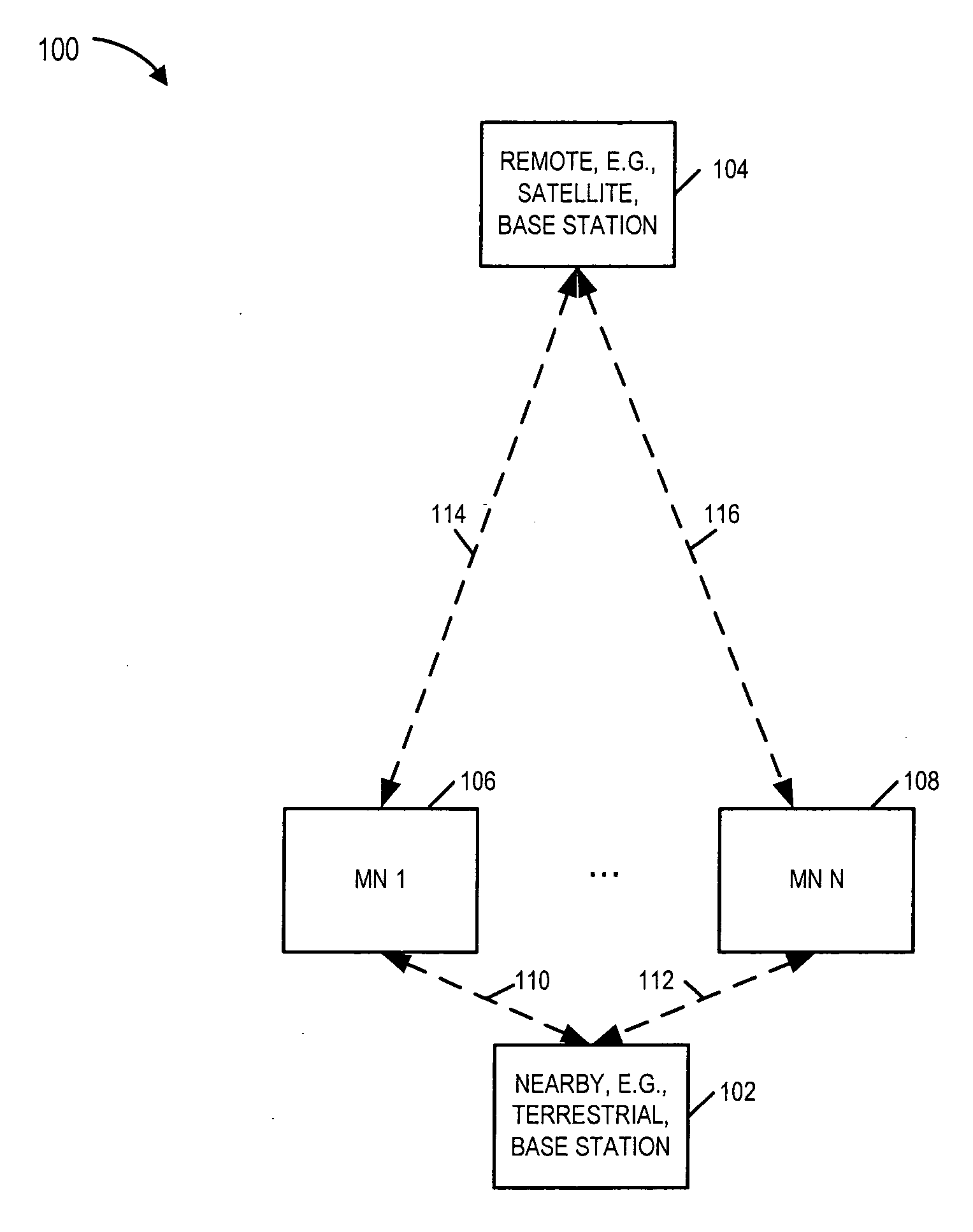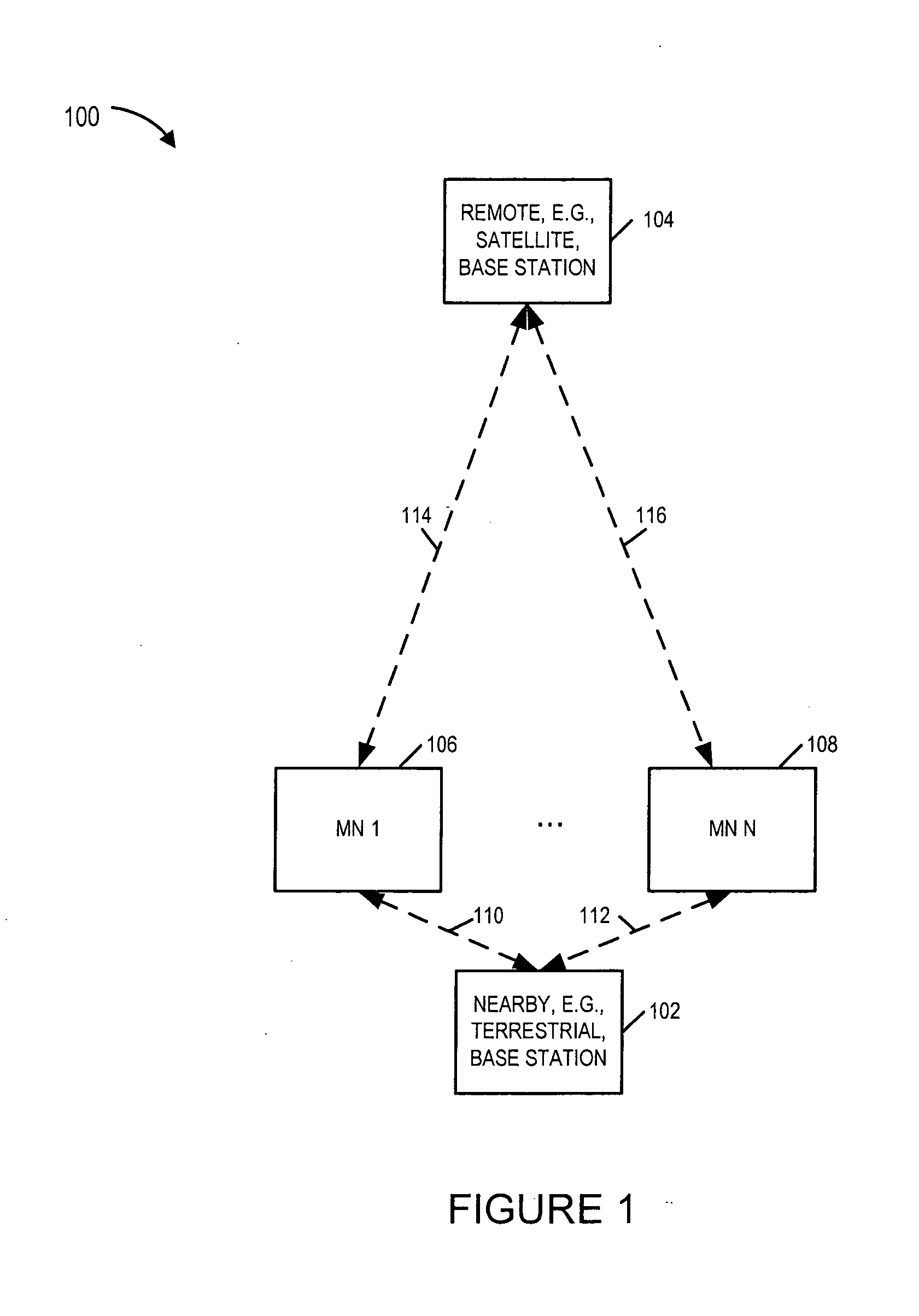Basestation methods and apparatus for supporting timing synchronization
a technology of basestation and timing synchronization, which is applied in the direction of synchronisation arrangement, data switching network, wireless commuication services, etc., can solve the problems of difficult or impractical deployment and maintenance of terrestrial base stations, “dead zones”, and inability to deploy permanent terrestrial base stations. achieve the effect of increasing the average transmit power, improving the probability of clipping, and improving the transmission power
- Summary
- Abstract
- Description
- Claims
- Application Information
AI Technical Summary
Benefits of technology
Problems solved by technology
Method used
Image
Examples
Embodiment Construction
[0059]FIG. 1 is a drawing of an exemplary wireless communications system 100 implemented in accordance with the present invention and using methods of the present invention. The exemplary system 100 is an exemplary Orthogonal Frequency Division Multiplexing (OFDM) multiple access spread spectrum wireless communications system. The exemplary system 100 includes a plurality of base stations (102, 104) and a plurality of wireless terminals (106, 108), e.g., mobile nodes. The various base stations (102, 104) may be coupled together via a backhaul network. The mobile nodes (MN1106, MN N 108) may move throughout the system and use a base station, in whose coverage area it is currently located, as it point of network attachment. Some of the base stations are terrestrial based base stations, e.g., BS 102, and some of the base stations are satellite based base stations, e.g., BS 104. From the perspective of the MNs (106, 108), the terrestrial base stations are considered nearby base stations...
PUM
 Login to View More
Login to View More Abstract
Description
Claims
Application Information
 Login to View More
Login to View More - R&D
- Intellectual Property
- Life Sciences
- Materials
- Tech Scout
- Unparalleled Data Quality
- Higher Quality Content
- 60% Fewer Hallucinations
Browse by: Latest US Patents, China's latest patents, Technical Efficacy Thesaurus, Application Domain, Technology Topic, Popular Technical Reports.
© 2025 PatSnap. All rights reserved.Legal|Privacy policy|Modern Slavery Act Transparency Statement|Sitemap|About US| Contact US: help@patsnap.com



